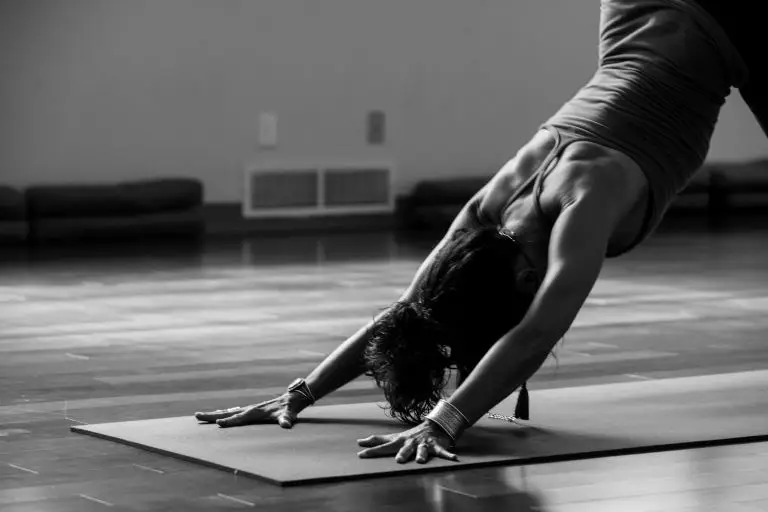Learn methods for integrating breathwork with yoga and fitness to enhance performance, reduce stress, and improve focus. Discover breathing techniques to elevate your practice.
Breathing is something we do without thinking, but what if we could harness the power of our breath to enhance our fitness and yoga practice? Breathwork—consciously controlling the breath—has been used for centuries in yoga and, more recently, as a powerful tool in fitness.
Whether you’re flowing through yoga poses or lifting weights, the integration of breathwork with movement can enhance performance, increase focus, and reduce stress. In this blog, we’ll explore how breath and movement go hand-in-hand and how you can start integrating breathwork into your yoga and fitness routine.
Why Breathwork Matters in Yoga and Fitness
The way you breathe influences your entire body. It impacts your energy levels, focus, endurance, and even your emotional state. When you consciously sync your breath with movement, you create a powerful synergy that can elevate your practice, whether it’s yoga or a high-intensity workout.
In yoga, breathwork is foundational. Known as pranayama in Sanskrit, breathing techniques help regulate the flow of energy, align your mind with your body, and deepen your practice. When breath is coordinated with movement, it turns yoga into a moving meditation, promoting both physical and mental balance.
In fitness, breathwork can be the key to powering through tough workouts. Whether you’re running, weightlifting, or doing high-intensity interval training (HIIT), proper breathing improves oxygen delivery to muscles, enhances endurance, and helps prevent injury by maintaining control during challenging movements.
The Benefits of Integrating Breathwork with Movement
- Increased Focus and Mindfulness: Conscious breathing helps keep your mind in the present moment. By paying attention to your breath, you minimize distractions and enter a flow state, where your focus sharpens and distractions melt away.
- Enhanced Endurance: Breathwork improves your oxygen intake, allowing your muscles to work more efficiently and for longer periods of time. This is particularly beneficial for athletes, runners, or anyone looking to improve their cardiovascular fitness.
- Better Stress Management: Integrating breath with movement can reduce the stress response. Deep, controlled breathing activates the parasympathetic nervous system, promoting relaxation and recovery, whether you’re on the yoga mat or in the gym.
- Improved Performance: Whether you’re lifting weights or practicing yoga, proper breath control can increase strength and flexibility. It provides better oxygenation to muscles, ensuring they function optimally and recover quickly.
- Injury Prevention: Breathwork encourages better posture and alignment, reducing the risk of injury. When you’re conscious of your breathing, you’re also more aware of your body, allowing for more precise and safe movements.
Breathwork in Yoga: Synchronizing Breath and Movement
In yoga, breathwork isn’t just an add-on—it’s a core component. The synchronization of breath and movement is known as vinyasa, which means “to place in a special way.” Every yoga pose is linked to a breath, helping you move with intention and control.
Here are some ways to integrate breathwork with yoga:
1. Ujjayi Breathing (Ocean Breath)
Ujjayi breath is one of the most commonly used breath techniques in yoga, especially during dynamic practices like Vinyasa or Ashtanga yoga. It’s also called “ocean breath” because of the sound it creates, like the ebb and flow of the sea.
How to Practice Ujjayi Breathing:
- Inhale deeply through your nose, slightly constricting the back of your throat.
- Exhale through your nose while maintaining the same constriction, producing a soft, ocean-like sound.
- Sync your breath with your movement. Inhale as you expand or open your body (e.g., reaching upward in a pose), and exhale as you contract or fold (e.g., during a forward bend).
Ujjayi breath helps regulate the flow of prana (life force) and keeps the mind focused, providing a calming effect while also building heat in the body.
2. Breath-to-Movement in Sun Salutations (Surya Namaskar)
Sun Salutations are a sequence of yoga poses traditionally practiced at the beginning of a yoga session to warm up the body. Each movement is paired with either an inhalation or exhalation, creating a continuous flow of breath and movement.
Example of Breath and Movement in Sun Salutations:
- Inhale as you raise your arms overhead.
- Exhale as you fold forward into a standing forward bend.
- Inhale as you lift halfway, lengthening the spine.
- Exhale as you step back into plank pose.
- Continue to pair each transition with a breath, creating a mindful and meditative flow.
Sun Salutations are a powerful example of how breathing can be integrated with movement, making each transition fluid and intentional.
Breathwork in Fitness: Powering Performance and Recovery
Incorporating breathwork into fitness training is just as important as it is in yoga. Whether you’re doing strength training, cardio, or functional fitness, breath can either fuel your workout or hinder it if not done correctly. Many people unknowingly hold their breath during challenging exercises, which can lead to muscle fatigue and dizziness. Proper breathing ensures a steady supply of oxygen to your muscles, improving endurance and focus.
Here’s how you can integrate breathwork with your fitness routine:
1. Diaphragmatic Breathing for Strength Training
Diaphragmatic breathing, also known as “belly breathing,” is a deep breathing technique that engages the diaphragm rather than shallow chest breathing. This technique can help during weightlifting and strength exercises by creating stability in the core and reducing the likelihood of injury.
How to Practice Diaphragmatic Breathing:
- Before lifting, take a deep inhale through your nose, allowing your belly to expand.
- As you perform the lift, exhale slowly and steadily, keeping your core engaged.
- Inhale during the lowering phase of the movement, preparing for the next rep.
Diaphragmatic breathing helps you maintain control over your body, especially during compound movements like squats, deadlifts, or bench presses.
2. Rhythmic Breathing for Cardio
Whether you’re running, cycling, or swimming, syncing your breath with your movements can improve endurance and efficiency. Rhythmic breathing involves coordinating your breaths with your steps or strokes, allowing for more efficient oxygen intake.
How to Practice Rhythmic Breathing in Running:
- Try a 3:2 ratio: inhale for three steps and exhale for two steps.
- Adjust the ratio depending on the intensity of your run. For slower paces, a 4:3 ratio may feel more comfortable, while faster sprints might require a shorter 2:1 ratio.
This method helps prevent breathlessness and ensures a steady flow of oxygen to your muscles, reducing fatigue.
3. Box Breathing for Recovery
Box breathing, also known as square breathing, is a simple yet powerful technique for calming the nervous system after an intense workout. This breathwork method helps shift your body from “fight or flight” mode to “rest and digest,” speeding up recovery.
How to Practice Box Breathing:
- Inhale for a count of 4.
- Hold the breath for a count of 4.
- Exhale for a count of 4.
- Hold the exhale for a count of 4.
- Repeat this cycle for 5 to 10 minutes post-workout to promote relaxation and recovery.
Practical Tips for Integrating Breathwork into Your Routine
- Start Small: If you’re new to breathwork, begin by practicing simple techniques like diaphragmatic breathing or Ujjayi breath for a few minutes each day.
- Use Cues: During your yoga practice or fitness routine, use breath cues to remind yourself when to inhale and exhale. Over time, this will become second nature.
- Practice Consistently: Breathwork, like any skill, requires practice. Make it a regular part of your yoga or fitness routine to reap the full benefits.
- Listen to Your Body: Pay attention to how your body responds to different breathing techniques. If you feel lightheaded or dizzy, slow down your breathing or take a break.
In summary – Integrating Breathwork with Yoga and Fitness
Integrating breathwork with movement is a powerful way to enhance both yoga and fitness practices. By consciously controlling your breath, you can increase focus, boost performance, reduce stress, and improve overall well-being. Whether you’re flowing through Sun Salutations or powering through a set of squats, breathwork will elevate your practice and bring a new level of mindfulness and control to your movements.
Remember, your breath is one of the most accessible and effective tools you have—use it wisely, and it will transform your fitness and yoga journey.
Go here to learn more about my online Meditation Course.
Why not treat yourself to a Meditation Retreat in the beautiful Devon Countryside?
Best Wishes,
David.
© D. R. Durham, All rights reserved, 2024.



